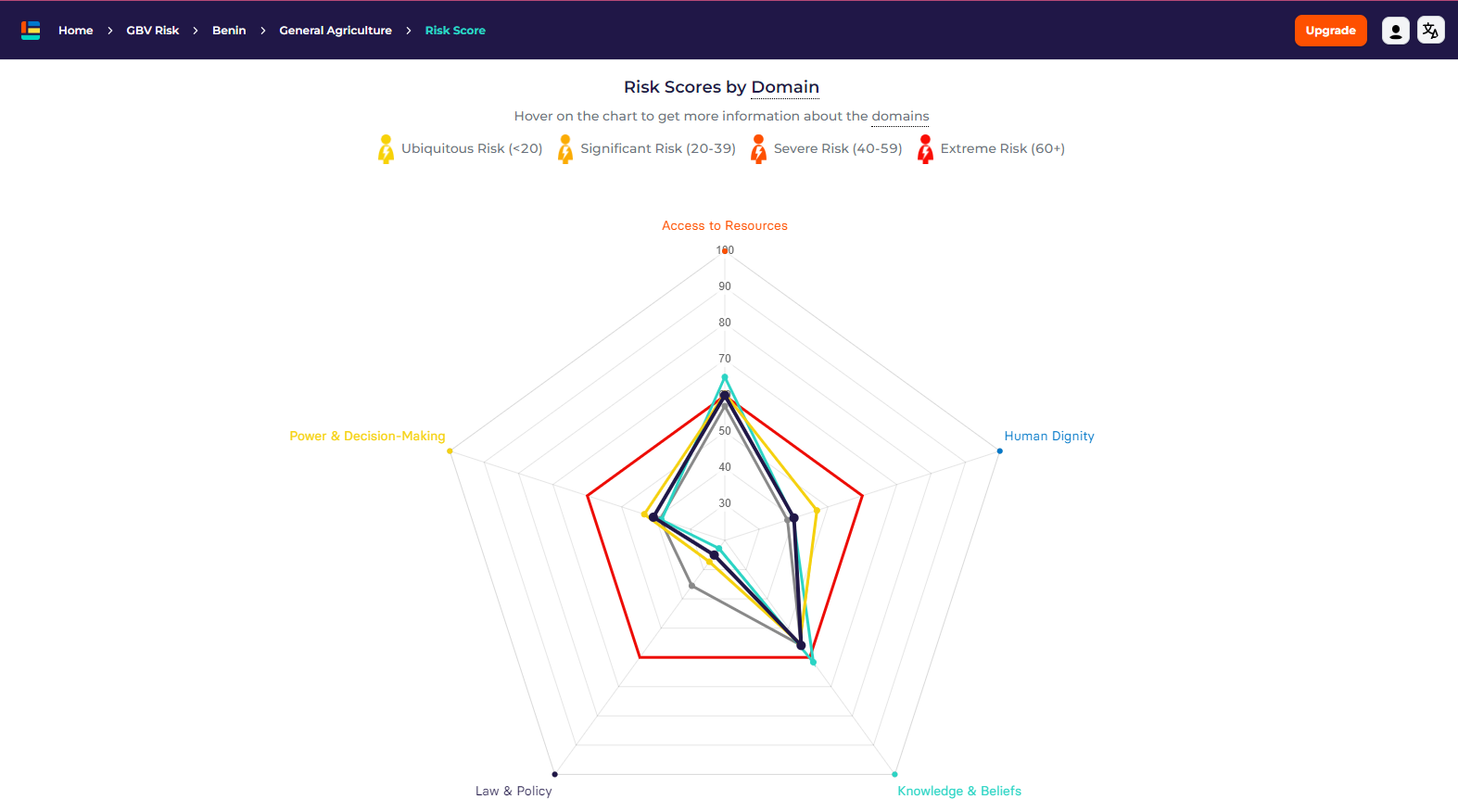GBV Risk Score by Domains
1) Introduction
The GBV Risk Score is a tool that assesses the risk of gender-based violence (GBV) in your choice of country and sector. It generates a score using data from trusted international sources, evaluating five key categories:

🔸Human Dignity
- What it measures: How common GBV is in a country
- Examples: Violence between partners, child marriage, harassment at work
🔹Law & Policy
- What it measures: Laws and rules about GBV
- Examples: Laws against child marriage, punishments for domestic violence
🔸Knowledge & Beliefs
- What it measures: What people think about GBV
- Example: Whether people think it's okay for a husband to hit his wife
🔹Access to Resources
- What it measures: Help available for GBV survivors
- Examples: Mental health services, medical and legal help
🔸Power & Decision-Making
- What it measures: Women's ability to make decisions about their own money
- Examples: Women's ability to make decisions about their own money
👉Click here for more information on our GBV Risk score methodology
👉Click here for more information about the "country and sector analysis", plus the "Transforming Agency, Access and Power" (TAAP) Methodlogy.
2) How to use the chart?
Check the video below and follow the step-by-step instructions:
The chart in the video shows an example of how Benin compares to:
- Other countries nearby
- Countries with similar wealth level
- All countries with lower middle incomes around the world
By looking at these comparisons, you can see how Benin is doing in preventing GBV and supporting survivors.
👆This chart shows us where help is needed most and what kind of help might work best.
- 💡Pro Tip 1: Check this GBV Risk Score article, section 3, offering an expanded explanation of each GBV Risk Level
- 💡Pro Tip 1: To deepen your understanding of this tool. Check the GESI Analysis tutorial, the Domains-related spiderweb chart from Min 2:25 onwards,
3) Power Score and confidence score:
- Power Score: This measures the amount of data available for a country from all possible indicators.
- Confidence Score: This measures the quality of the available data by showing how much of it comes from recent, standardized international sources.
